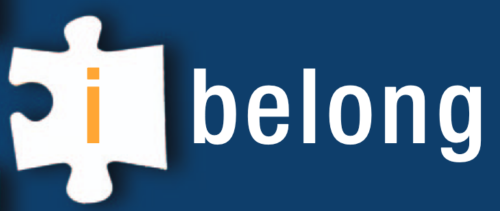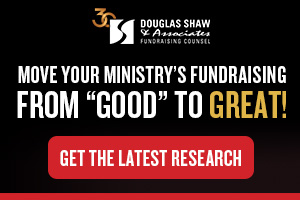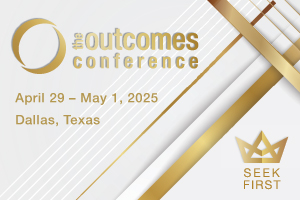
How to Grow Operating Reserves By Natalie Roderick

You Can Intentionally Grow Your Operating Reserves
Most nonprofits are comfortable in having sufficient operating reserves to ensure their continuity, whether 30 days of reserves, three months, or even longer. Many are keeping these reserves in a checking or money market account, even when the dollar amount may be in the millions.
An idea to consider when it comes to managing these reserves is to put the funds to work. Like any investment portfolio, there are a variety of factors to think about, not least of which is the asset liquidity necessary to make them available when needed and the inflows and outflows of the reserves.
Objectives
The intended purpose of operating funds will drive the time horizon and liquidity needs. That could be a very short-term horizon, a non-specified objective, or a long-term time frame. Generally, the longer the time frame, the more predictive return expectations will be. Many endowment-like assets have equity exposure, too, and the longer the timeframe, the more equity exposure a portfolio should have as well. When setting equity return expectations, valuation should also be considered. Stocks are very expensive today.
With interest rates where they are currently, many investment committees and finance executives are rethinking how they manage operating reserves. For most, bonds have been the predominant investment choice for operating cash, but in the current marketplace bonds have not performed well.
Downside Risk
To find an appropriate mix, we believe that the downside risk of portfolios with different objectives should be quantified. A forward-looking view of the capital markets can help quantify a ‘worst case’ drop in the portfolio over a 1-year time frame. This can be done by calculating both the one-in-twenty chance (95th percentile) and a one-in-one-hundred chance (99th percentile) of a one-year loss.
This ‘worst case scenario’ planning can help nonprofits design their portfolio appropriately. We have seen executives and committees struggle during difficult markets but spelling out the range and probability of specific outcomes has helped to keep them grounded, avoiding common mistakes. Adding some degree of quantifiability to an uncertain future can make decision-making easier.
We also think that it is imperative to rebalance portfolios in such markets. Instead of trying to predict markets, we follow processes, which is a key fiduciary discipline for investment consultants and the organizations they serve.
An Example
One of our mid-sized religious clients had various capital projects underway, in stages varying from planning to implementation. They had historically lumped all their funds into a single portfolio without considering the various time horizons associated with each project.
By identifying the various goals of the portfolio, we were able to design a customized approach, recommending that they divide the portfolio into four buckets:
- Short-term (1-3 years)
- Mid-term (3-5 years)
- Long-term (5 years +)
- Very long-term (10 years +) or endowment/foundation assets
The portfolio risk of each of the buckets was reduced as the time horizon was shortened. While portfolio returns were targeted, they were not considered bullet payments, as with a bond. As a result, the earnings on their overall portfolio have grown dramatically while maintaining the appropriate commensurate level of risk for each bucket. Each organization must examine their unique circumstances to successfully implement investment products.
Values
As a Christian organization, constructing your portfolio needs to align with Christian values so that you are not including investments that support organizations in conflict with your beliefs. Direct or indirect investment in companies connected to areas such as abortion or pornography clearly do not align with Biblically responsible investing.
Sometimes these connections can be subtle. For example, a particular fund was identified through screening that initially appeared to align with a nonprofit’s biblical values. Through deeper due diligence at the company level, it was clear that the organization was blatantly supporting anti-Christian entities.
Investing operating reserves requires careful consideration of time horizon, investment risk and organizational values. Biblically aligned investing brings all these together to further the Kingdom of God.
####
Natalie Roderick is a Vice President at Innovest Portfolio Solutions, an independent provider of investment-related consulting services. Innovest specializes in helping Christian organizations meet their investment goals and objectives and keeping their investment portfolio aligned with their values.

Christian Leadership Alliance member, Innovest, is sending experts to conduct a Breakthrough Workshop at the Outcomes Conference 2022. Here is what they have planned for you:
Rethinking Operating Reserves
Operating reserves are a unique component of organizational finance. Continued low interest rates have further driven investment committees and finance executives to rethink how they manage them. Learn how to manage operating reserves for better results.
Outcomes:
1) Realize how the time frame will dictate a program’s make-up,
2) Know how to consider risks when investing operating reserves, and
3) Recognize how investment products for implementation can be customized to the unique circumstances of the organization.
Presenters: Sloan Smith, Principal, Director, and Steven Fraley, Vice President, Innovest Portfolio Solutions
There is still time – Register Today!

What is Christian Leadership Alliance?
Christian Leadership Alliance equips and unites leaders to transform the world for Christ. We are the leaders of Christ-centered organizations who are dedicated to faithful stewardship for greater kingdom impact.



